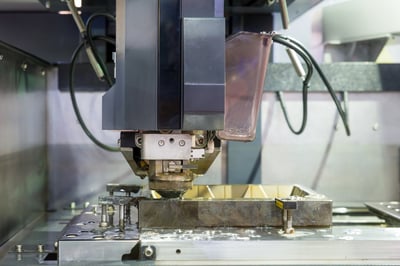 In addition to the superior performance properties of thermoset plastics, the material can be processed in various ways to achieve shapes and properties. Five different manufacturing processes are used to form composites:
In addition to the superior performance properties of thermoset plastics, the material can be processed in various ways to achieve shapes and properties. Five different manufacturing processes are used to form composites:
1. Compression Molding
Compression (force) and heat are used to shape a raw material by means of a mold. Matched metal dies are mounted in a molding press. The material charge is placed in the mold, heated mold halves are closed, and pressure is applied. Cycle time ranges according to part size and thickness. Compression molding is ideal for larger parts that require high dimensional stability. Tooling costs will vary depending on the size and complexity of the part, along with overall cavitation.
2. Filament Winding
Fibers are passed through a resin bath before being wound onto a mandrel until the desired thickness is achieved. The mandrel and fibers are cured via heat, and the fully cured, finished tube is then removed from the mandrel.
3. Pultrusion
Glass fiber and rovings are pulled through a resin bath (rather than pushed, as is the case in extrusion) and then through a heated die using a continuous pulling device. The material is formed and cured as it passes through the die. Finally, the fully cured profile is cut to length.
4. Wet Lay-Up Compression Molding (Closed Mold)
Resin is spread over a glass mat and loaded into a press, and the mold is closed. Heat along with pressure causes the material to cure. Cycle time, glass layers, and resin quantity will vary depending on the thickness of the finished sheet.
5. Injection Molding
In the Buk Molding Compound (BMC) injection process, a plunger forces a “shot” of material through a heated barrel and injects it into a closed, heated mold. The liquefied BMC flows into the mold. After cure, the parts are ejected and finished. Injection molding is better suited for smaller, high-volume parts in more aesthetic applications. Short cycle times make for a very efficient and cost-effective process.


